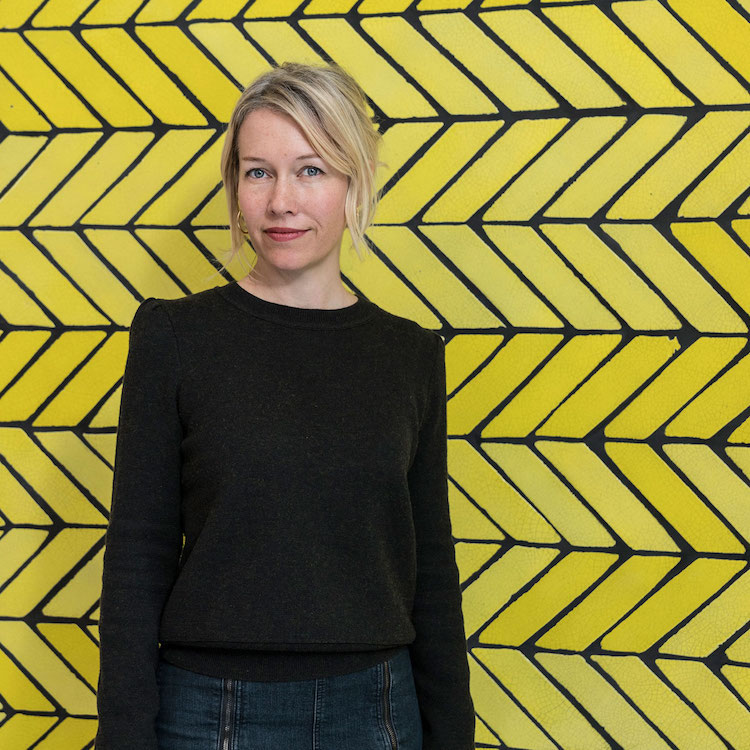New York-based artist Sarah Crowner’s most recent exhibition, which wrapped up earlier this year, Beetle in the Leaves at MASS MoCA (April 16, 2016 – February 12, 2017)—her first solo exhibition in a U.S. museum—mines the legacy of abstraction from both the fine and applied arts, treating art history itself as a medium to be manipulated—sampling, collaging, and rearranging existing images to create new forms.
Her practice not only includes her stitched paintings, but her bold ceramic murals and floor installations, which explore the integrations of the arts creating a bespoke, intimate environment and stage.
This installation invited viewers to engage directly—face to face, visually, and spatially—with the works, which in turn operate like performers on the raised stage, enveloping the viewer in the scene. The hard, glossy nature of the tiles and the hard edges of their uniform grid structure provide counterpoints to the softly textured canvas and curvilinear forms of Crowner’s paintings.
This large wall installation is from her first solo exhibition in the UK, Plastic Memory at Simon Lee Gallery (May 23 – June 18, 2016). The exhibition references a term used in ceramics to describe the visual evidence of how wet clay has been kneaded, stretched and manipulated with these traces remaining apparent or “remembered” in the material, even once the object is fired.
Viewers were greeted by a celadon green tile wall mural with a stitched painting hung on top. This vibrant, shimmering work sets the tone for the exhibition as Crowner questions the nature of painting, its materials and limits.
A glazed-white terracotta tiled, raised platform intersects the gallery floor, which viewers traversed to view the other paintings in the exhibition. Elevated as a false floor, the pentagon patterned tiles are a kind of purposeful geometric abstraction, and encouraged the viewer, themselves, to become part of the composition.
An echo between the tile tessellation and the composition of Crowner’s stitched paintings, between grout and seams, further establishes a relationship between the floor and wall, situating the viewer at the heart of the installation. The tile pattern is based on a pentagon with five different length sides, which can only repeat when the tile is matched with its mirror. The two reflecting tiles suggest an open book, butterfly wings, or leaf-like panels and beautifully illustrate Crowner’s interest in systems and patterns, production and reproduction, in culture and nature.
Text (edited) from the galleries/museum.
Do you love or loathe these exhibitions and works from the worlds of contemporary ceramic art and contemporary ceramics? Share your thoughts in the comments section below.













Add your valued opinion to this post.